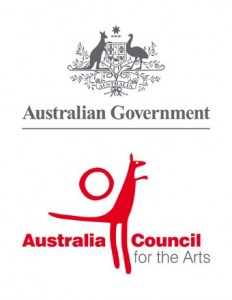It should not be a surprise to anyone working in the arts that artists face a greater degree of uncertainty over their incomes and careers than other professionals.  While we have witnessed growth over the last 30 years in the number of artists, the level of government and private sector support for arts practice and in the recognition of artistic value in the community, the lives of artists remain precarious.
While we have witnessed growth over the last 30 years in the number of artists, the level of government and private sector support for arts practice and in the recognition of artistic value in the community, the lives of artists remain precarious.
There is plenty of anecdotal evidence for this, but it is now also possible to compare statistical evidence on the employment characteristics of practicing professional artists in Australia. This is the core objective that underlies two research studies commissioned by the Australia Council which will be published at the end of July 2010:
1. Do you really expect to get paid; An economic study of professional artists in Australia, by David Throsby and Anita Zednick. This study, commissioned by the Australia Council, was conducted and written independently by Professor David Throsby and his research colleagues at Macquarie University. This is the fourth such study undertaken by professor Throsby since 1989. [The Artist Survey]
2. Australian Arts Employment: The Census Study– An analysis of data from the past three Australian Population Censuses (1996, 2001 and 2006) in relation to artists’ employment and income, undertaken by the Centre for Creative Industries and Innovation at QUT, under the leadership of Professor Stuart Cunningham. [The Census Study]
These studies will provide the most recent and useful information on the number, employment, income and related issues to the practice of professional artists. Both represent a continuation of the commitment that the Australia Council has undertaken for some time in providing a statistical picture of the economic life of artists in Australia.
Each study takes a differing approach to gathering information. The Australian Population Census is just that, a survey of the entire Australian population and therefore the data is not drawn from a sample. The questions asked are about the ‘main job’ undertaken by the respondent in the week prior to the Census. Since the measurement is only of the main job in the week preceding the Census and it is well known most artists earn the majority of their income from other sources, the Census only captures some of the employment of some practising artists. Nevertheless, the approach taken in the Census Study provides new insights into arts employment drawn from the Australian Population Census data and represents the first time such analysis of census data on arts occupations has been undertaken.
The Artist Survey, like the preceding studies by Professor Throsby, is based upon a survey in November 2009 of approximately 1,000 practicing professional artists whose arts practice may or may not have been their main source of income. The sample is drawn from the membership of various cultural professional individuals and associations and covers writers; visual artists and craft practitioners; actors and directors; dancers and choreographers; musicians, singers and composers; and community cultural development workers. Further, those included in the sample also need to be practicing, actively seeking to pursue their art, irrespective of the sources of their overall income.
The data gathered by these two methods are complementary, but not necessarily directly comparable. Each has strengths and weaknesses. But, taken together the two surveys build a strong picture of the employment characteristics of artists in Australia.
When compared to research undertaken in Europe, North America and the Asia-Pacific region, the studies provide empirical evidence that artists’ working lives and artists’ labour markets are similar around the world, and can be characterised by a particular mix of features and circumstances outlined in both these reports.
The reports discussed above will be launched by the Australia Council at the end of July.
Nick Herd
Dr Nick Herd is Director, Research and Strategic Analysis at the Australia Council. Nick has an extensive background in the cultural sector since the seventies. He has taken on many roles in that time, including exhibitor, distributor, broadcaster, broadcasting regulator, industry advocate, consultant, teacher and author.
View the reports
http://www.australiacouncil.gov.au/research/artists/reports_and_publications/artistcareers
See the stats…
 This work is licensed under a Creative Commons Attribution-NonCommercial-ShareAlike 3.0 Australia.
This work is licensed under a Creative Commons Attribution-NonCommercial-ShareAlike 3.0 Australia.







[...] Australia Council’s Director of Research and Strategic Analysis, Nick Herd presents an overview of two recent that the economic life of artists in Australia. Sarah Jansen [...]